Your basket is currently empty!
Opals Uncovered: Revealing the Hidden Wonders of Nature’s Gems

By Sheena Gill & Marie Chalmers
For Marie, it has been a career-long ambition to go down under and visit the Opal fields that produce over 90% of the world’s gem-grade Opals. As a Global Gemstone Buyer, she has seen many mines across the globe. Yet, the Australian Opal mining fields have always evaded her, which is something to correct as soon as we can.
Marie’s passion for this Gem began well before she qualified as a Gemmologist over twenty years ago. She devoured everything there was to know about this incredible, unique Gemstone. Having written about Opals, trained many trades-people in the Jewellery Industry and bought tens of thousands of £’s worth of this mesmerising Gemstone, she is now sharing some of that knowledge and experience with you so you can truly translate the majesty of Opals into the heart of your designs and makes.
The origin of Opals
Even with most Opal coming from Southern Australia, it is not quite a single-source Gemstone. In addition to Australia, this Gemstone is mined in other countries like Brazil and Mexico. Ethiopia exploded into Gem-grade Opals when it entered the jewellery market in 1994. Opals from the Wollo province (Welo Opals) have become dominant in the jewellery trade due to their varied and dramatic Opal types even though the deposit was not discovered until 2008. In fact, this is where Marie now buys most opals due to price and the rarity of Australian Opal, which she still buys for higher-end jewellery makers.
Australia has four very famous mines. They had become synonymous with Opals since the late 1800’s when the Opal fields attracted more and more miners after the first discovery there in 1849 by German Geologist Johannes Menge. Yet before Australia was the largest miner of gem-grade Opals, Slovakia was in fact the opal epicentre. Slovak Opal Mine in Slovakia was the first location to mine at a massive scale. It has around 22km of swiss-cheese-like tunnels and shafts of up to 150 meters that today are preserved and home to wintering bats.
As the baton passed down-under, many famous Opals have been mined in renowned mines, such as Lightning Ridge (the largest producer by value and largest producer of Black Opal) and Coober Pedy, known as the ‘Opal capital of the world’ due to the sheer amount of opals excavated there. Interestingly most residents live underground there, some having mined enough opals to cover the cost of their home during the build process. With its production of White Opals solidifying its place on the world Opal stage, recent years have seen the Coober Pedy field expand, and all types of Opals are now found there, such as Boulder Opal, with its internal raging fires. Incidentally, Black Opal is not black; the front of the stone hosts many colours, but the back of the stone has a black body, and this is how they are identified.
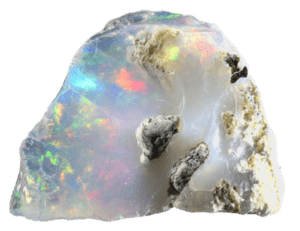 |
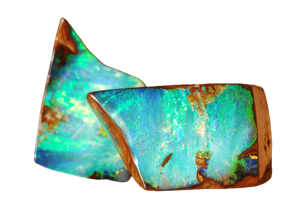 |
 |
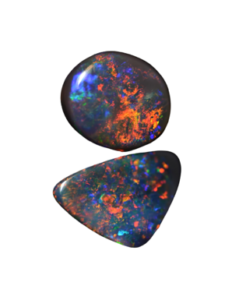 |
The History of Opals
We have used Opals in jewellery making and adornments for millennia. Opal artefacts date back as far as 4,000BC. The human penchant for creating beautiful things out of dazzling Gemstones has not diminished throughout the ages. Opals have forged a high status through time, from the Stone Age to the Roman Empire, where Cleopatra wore Opal rings and jewellery, and Opals were declared the “gem of all gems”, onto Emperor Napoleon’s Josephine wearing the famous Trojan Fire. Queen Victoria sealed the decadent status of Opals as it is well documented that it was her favourite Gemstone.
Sheena spoke with Fiona Altmann of Altmann and Cherny in Sydney and discussed important, more modern Opal finds. As the General Manager of the oldest Opal specialist in Australia, Fiona is best placed to give us the details on The Queen’s Opal and the record-breaking Olympic Australis.
Fiona explained when Her Majesty The Queen and His Royal Highness Prince Philip went on their Australian Tour in 1954; the Australian Government turned to Fiona’s grandfather to find the finest Opal Gemstone, a gift from the Australian people. He found the finest Opal ever to be mined in the Andamooka mines. He went on to cut & polish it personally into six separate stones that were set in a necklace, earrings and cufflinks for the royal couple. Only five opals were used in this suite, with the sixth going to a very fortunate private collector. We can only imagine how that mysterious Opal has been set.
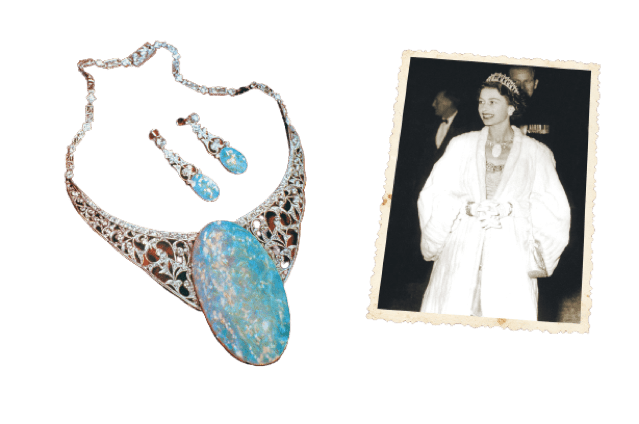
Fiona tells us the story of her Grandfather and Rudi Cherny. Both gentlemen had an extraordinary talent for appraising pieces of rough Opal. In 1956 her grandfather and Rudi Cherny purchased a bag of rough Opals and inside was one huge Opal. Fiona explains how they decided to keep it whole and name it in honour of Australia hosting the summer Olympics that year. They called it the Olympic Australis. The stunning Opal is a staggering 17,000 carats and 99% Gem Opal and was last valued at US$1,800,000. You can see this phenomenal Gemstone in Sydney at the Altmann & Cherny store, where it is on permanent display.
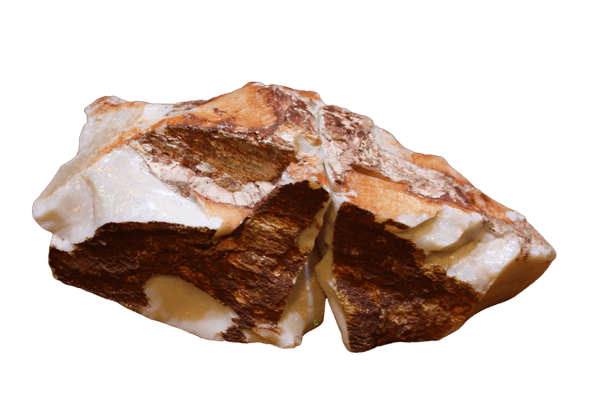
Interestingly, Fiona talks about the early indigenous Aborigines in Australia and they did not use Opal as adornments. Hence, when Cook landed, Opal was not immediately on the colonising radar. The Aborigines have an incredible belief that their ancestor conveyed himself to earth on a rainbow. Where that rainbow landed, it filled the Earth with rainbow-coloured rocks, which were the first Opals.
Opal seems to have a chequered past when it comes to luck; however, most of this is nonsense. In the late 19th-century and early 20th-century, Diamond dealers perpetuated the bad-luck myth as Opal gained momentum in the jewellery trade. Indeed, the luck of the Opal goes way back, where it’s documented that the Romans used it as a travel talisman to keep them safe. Today, it is widely used in crystal healing as it helps to maintain calmness. It encourages independence, plus it stimulates originality and creativity. As the birthstone for October, Opal is considered the fire of the human spirit. Its energies help keep our passions and dreams burning, especially when we feel down on ourselves.
Opal Gemmology:
Whether we are buying for jewellery making, collecting, or healing qualities, we find ourselves today with many Opal buying choices. We need to ensure that what we are purchasing is authentic and real. How do we do that? First of all, let’s take a quick look at how Opal forms. Its formation also enables us to identify synthetic or fake Opals and grade the real deal.
Opal has a very fine structure consisting of millions of regular stacking uniform spheres of amorphous silica with regularly arranged gaps between them. Amorphous in gemmology terms means that there is no set form – they are not crystalline – just like Amber, which is also an amorphous material.
The arrangement of these micro-spheres is critical to the colours being displayed when light interacts with them. Large spheres may diffract green, blue and violet flashes. Whereas even larger and perfectly aligned spheres may create red flashes, the rarest and most valuable colour.
The phenomenon created is called Opalescence, and it is caused by the way the light reacts with the Gemstone and the eye. As the light travels into the Opal, it is diffracted from the tiny perfectly aligned and stacked silica spheres and depending on the attributes mentioned above; it will display different colour flashes to the eye.
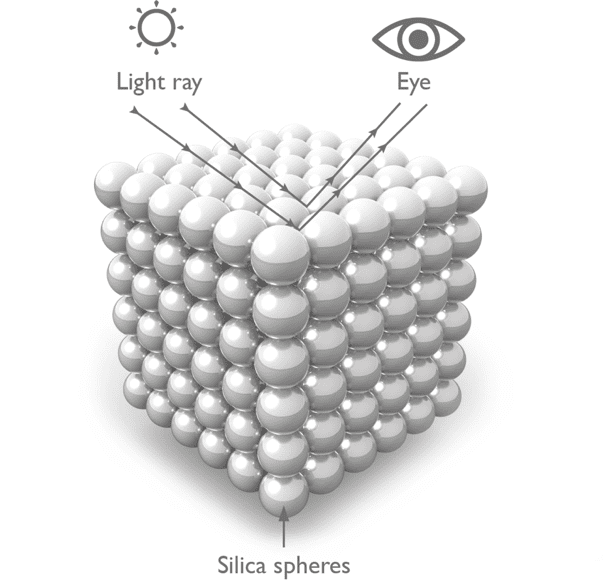
It wasn’t until the 1960s that scientists could use electron microscopy to see the unusual structure of Opal and understand why the Opal shows these fantastic flashes. Yet, jewellers have always known that this was an extraordinary and precious Gemstone. During the art nouveau movement, well-known jewellers such as Rene Lalique, Archibald Knox, Cartier and Tiffany & Co sourced their Opals in Australia before mass mining. They made the Opals into the most exquisite jewellery. Today much of it is worth tens of thousands of UK pounds. Australian vintage Opal is highly desirable due to its scarcity, beauty and provenance.
While there is no global corporate monopoly controlling the Opal market, much like Diamonds, there is a 4 C grading system for opals. Again, colour is the main criterion, like Diamonds. The colour doesn’t just mean the overall colour such as black, red or white for example, it also means:
- the number of colours within the Gem
- the clarity
- the coverage of colour within the stone
- the all-important brightness of the fire, that undisputable play of colour
Once colour is covered, we then look to the clarity and any imperfections or matrix/potch, then the cut – assessing how symmetrical the cut is, the calibration and the polish – and finally we move on to the essential carat. Opals are bought by carat weight depending on the quality category of below commercial, commercial, good, fine and extra-fine. The Opals are assessed and accorded a category based on the above criteria but also, uniquely to Opals, directionality – this is the direction of the Opal’s flashes.
The all-important cutting and polishing of this Gem is a highly specialised skill. The cutter decides the best face and shapes for the stone. The process commences using a diamond saw to cut through the rough Opal to make the basic shape. The Opal is then adhered to a dop stick using heated wax; this allows greater control as it is shaped using a series of diamond wheels from coarse to fine. Imperfections are removed, the Opal is then polished using serum oxide on a felt wheel with water then finally the Opal is removed from the dop stick. The back of the Opal is cut to create a flat bottom. {Image John Altmann cutting fine opals in 1955}
We have had a fascinating look into Opals whilst compiling this blog and have fallen even deeper in love with them. We are proud that at Chalmers Gems, we have a great selection of Opals for your jewellery makes, and we challenged one of our fantastic guest designers, Anita Dickinson, to make a piece using some of our Opals to accompany this blog, which we hope you have enjoyed reading!

Browse Chalmers Gems Opals HERE.
Some images courtesy of Altmann & Cherny
Follow us on:
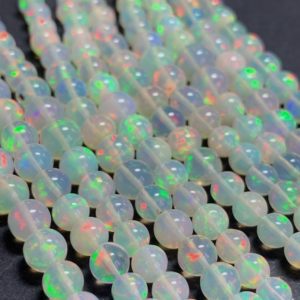


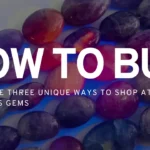

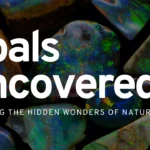
Leave a Reply